Welcome
Hello! Welcome to PSU Schuylkill’s Electrostatics virtual space presented to you
by the Physics 212 Honors students and instructor. In this virtual space, you will
learn how to determine the electric fields sources by their electric fields. These
sources include point charges, dipoles, and more. It is up to you to figure out
the sources present by exploring the way the electric field dectetor responds to the sources
electric fields.
Listed below are images to help familiarize yourself with how to discern these charges.
The figure shows a snapshot of the virtual space in action. There are markings on the
floor to indicate caridnal directions. You carry a
transparent ball with a bright sphere at its center and a needle which indicates the
current electric field direction. As part of your Heads Up Display, an unlabled scale with a horizontal bar
gives an indication of electric field strength.
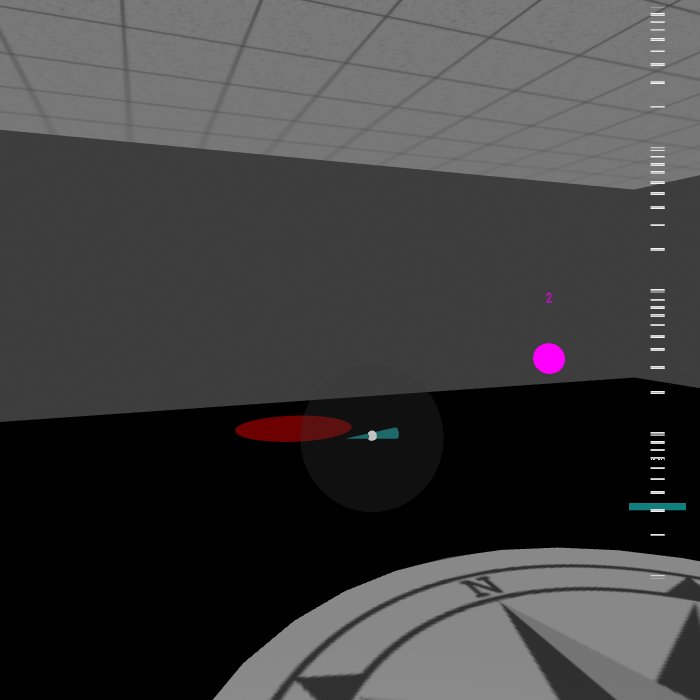
What you will find there
The types of fields/sources you may encounter (in various combinations):
- Uniform Fields
- Positive Charges
- Negative Charges
- Electric Dipoles
The electric field of a positive charge is directed away from the charge, as visualized by the electric field lines shown in
this short video clip. Our electric field detector will always point away from a positive charge.
The electric field of an electric dipole is more complex thant either a point charge or a
uniform field. In this clip we see a visualization of the electric field lines of a dipole oriented vertically upwards.
The field "along the sides" of the dipole point along the dipole in the direction opposite the orientation of the field but
at the ends of the dipole the electric field is directed in the same direction of the dipole (directly away from the dipole
near the "head of the dipole" and directly away from the dipole near its tail).
Some Basics
The dector is housed in a transparent ball.
The heart of the detector is the needle within the transparent ball.
The needle always points in the direction
of the electric field at the center of the detector. The detector
also includes an electric field magnitude level indicator
that is set up as a Heads up Display in the right side of your field of view.
Other features of the virtual space training room shown here are
some floor markings to indicate cardinal directions, shapes labeled with the sources they contain.
In the randomized room there will be a red disk on the floor where the user will go to check their observations.
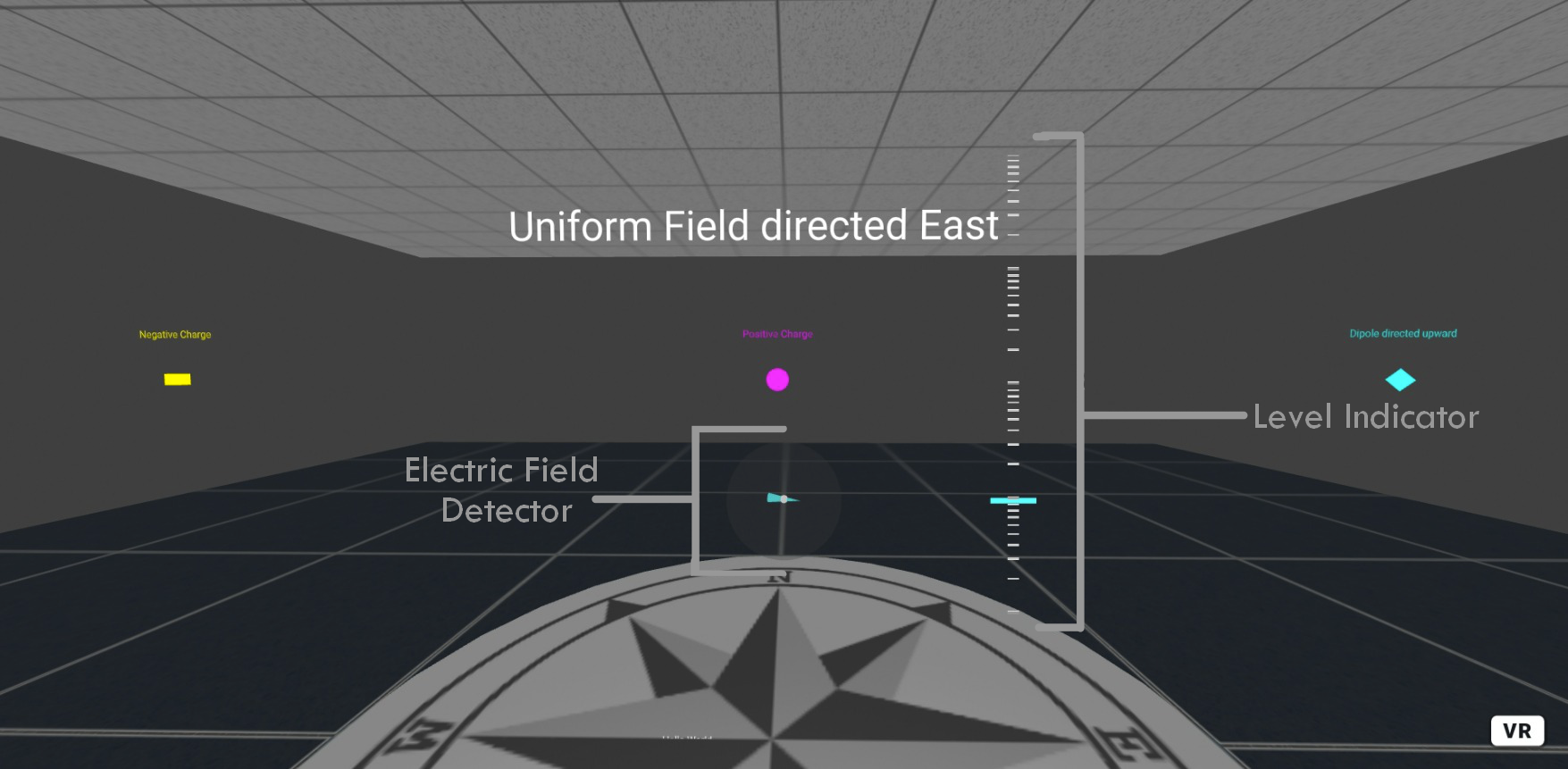
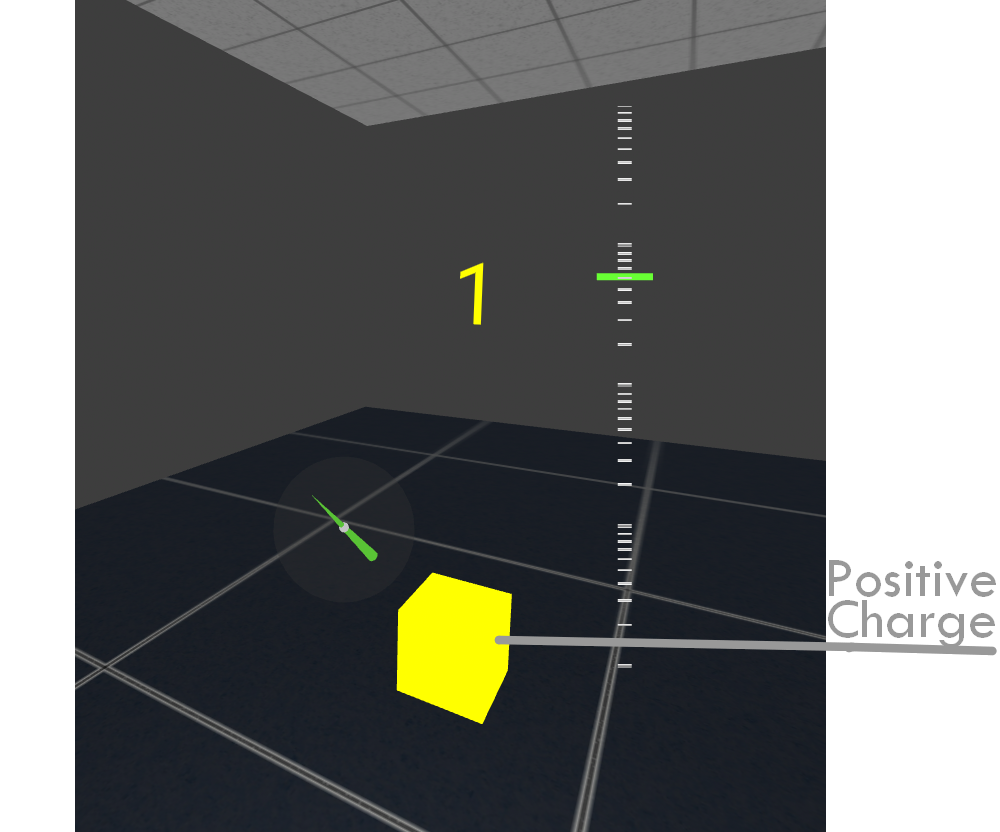
The Detector in Action
An example from the training room: The dector is shown interacting with a positive charge
in the yellow box. The direction of the detector is away from the the source. The level indicator
is getting closer to its highest range. If we move the detector around the positive charge, the detector
will always point away from that source. If the detector is moved closer, the electric field strenth goes up
so the level indicator also rises (within its limits).
The next steps!
Before you go adventuring,
Think About it:
Think About it:
- How can you tell if there is a uniform field present? What will tell you the direction of that uniform field?
- Do the field lines for the positive charges clip match how the detectors behave as described in the discussion above?
- What would the detectors do near a negative charge?
- What would the detector do next to the dipole described above? What would change in the detector's response if the dipole were pointed down instead of up? What would you find if the dipole were pointed east?
AFTER you can comfortably answer the questions above, explore the training room and get to know the Electric Field Behaviour.
The Training Room tells you what all the sources and fields are.
To move around in the virtual space:
Visit the Training Room
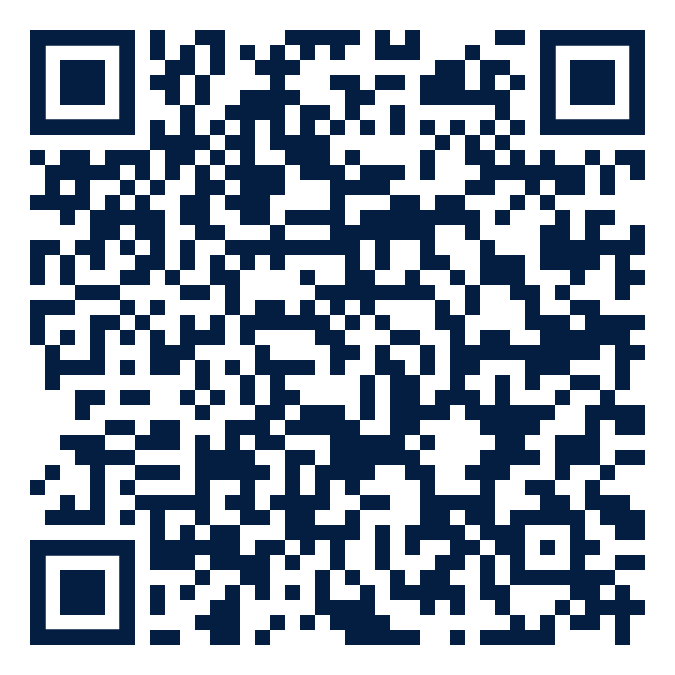
AFTER you have mastered the detector's behaviour, and familiarized yourself with how your controls will work, it will be time to do the random room challenge:
In the random room:
Visit the Random Room
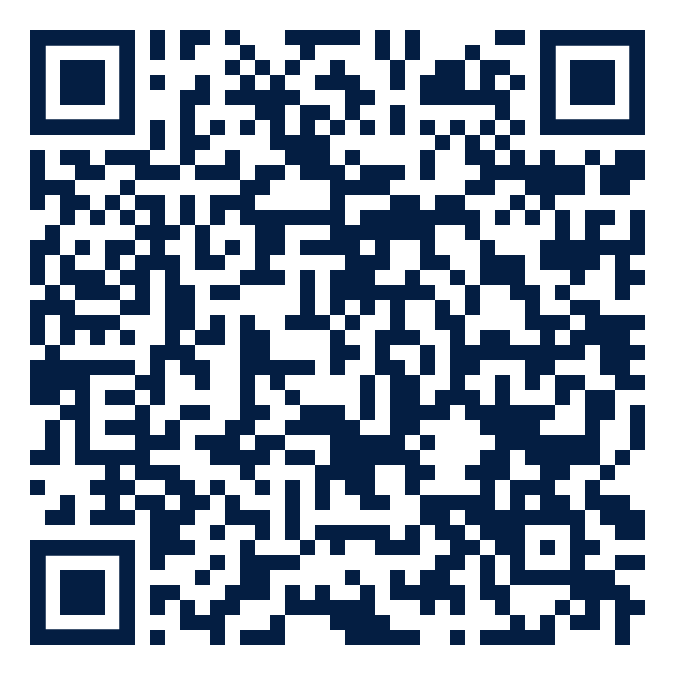
Note, each visit to the Random Room is a completely new randomized setup. Revisit to make sure it was your skills of observation and deduction, not just luck. Compete with friends for "best time".
Group Challenge: one group member operates the headset and describes to teammates what they see. In turn, the rest of the team direct the operator on wher to move, what observations to make, etc.
To move around in the virtual space:
- On a Computer: click on the screen within the virtual window and the screen will pan around with your mouse movements. Use the wasd keys to move around.
- On a mobile device: be sure to allow the web page access to your sensors. Look around by holding up your device and looking "through" it; when you turn in the real world, your view will turn with you. Touch the screen with a single finger and you will move forward and touch the screen with two fingers and you will back up.
- On a phone based VR headset: After going to the page, allowing the page to access phone sensors and touching the VR button on the screen to enter "glasses mode", put the phone in the headset and put it on. THere will be a button on the head set that activates forward motion.
- VR headsets with hand controls: use the web browser for your headset to connect to the page, and click on the VR button. Look around by moving your head, and move forward/backward/sideways by using the control disk on the hand controller.
Visit the Training Room

AFTER you have mastered the detector's behaviour, and familiarized yourself with how your controls will work, it will be time to do the random room challenge:
In the random room:
- There are three objects which may or may not contain electric field sources. The objects are labled by their position (1, 2 or 3)
- Some objects may be empty
- There will always be at least one source in one of the objects
- There may or may not be a uniform field
- Is there a uniform field? If so, what is the direction of the field?
- Is there a positive charge? If so, which container is it in? (1,2, or 3)
- Is there a negative charge? If so, which container is it in? (1,2, or 3)
- Is there an electric dipole? If so, which container is it in? (1,2, or 3) AND what is its orientation?
Visit the Random Room

Note, each visit to the Random Room is a completely new randomized setup. Revisit to make sure it was your skills of observation and deduction, not just luck. Compete with friends for "best time".
Group Challenge: one group member operates the headset and describes to teammates what they see. In turn, the rest of the team direct the operator on wher to move, what observations to make, etc.